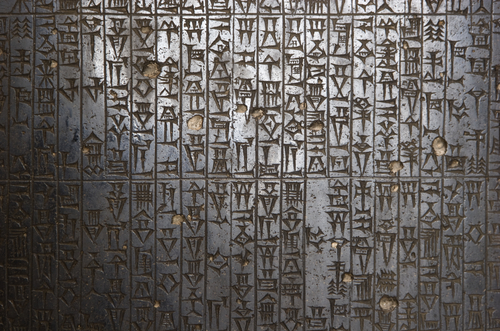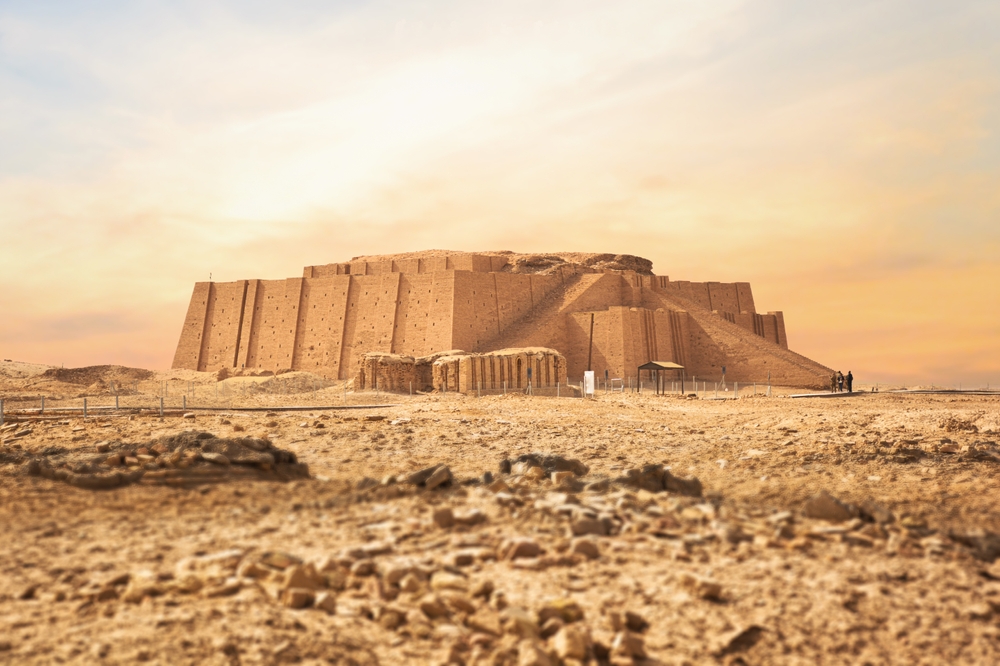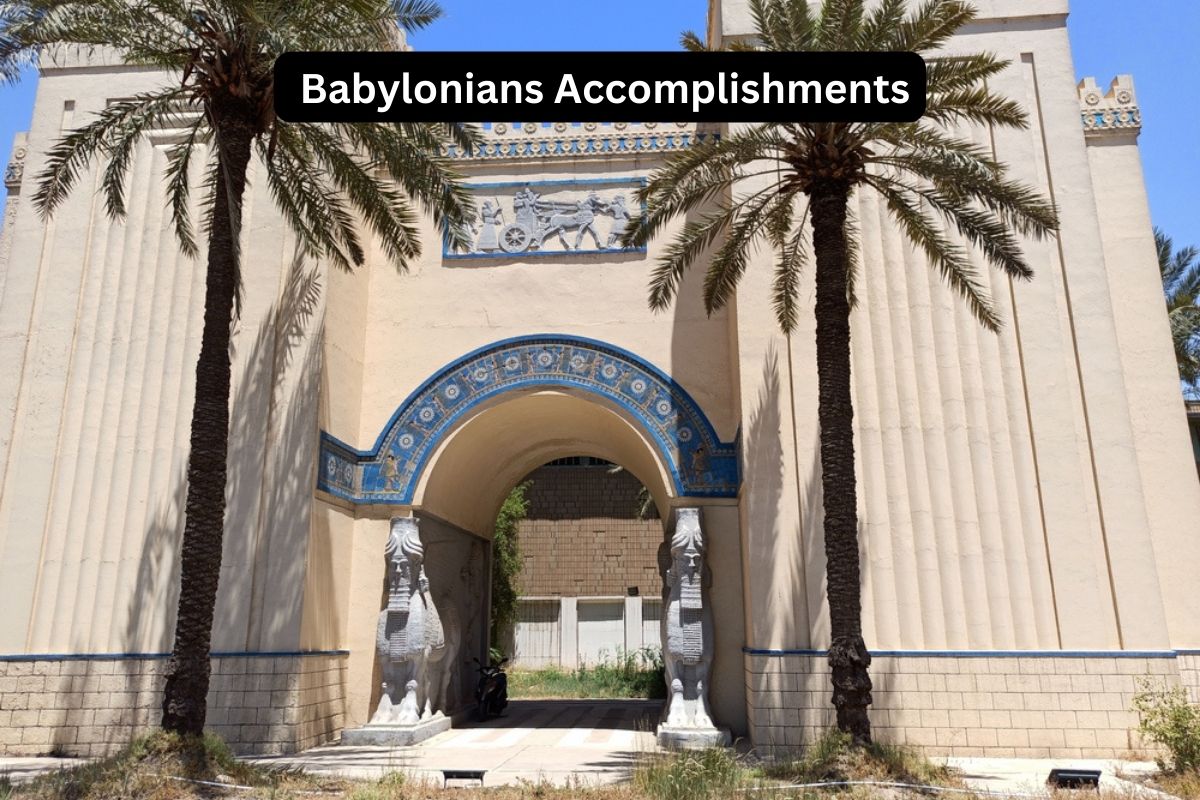The Babylonians, an ancient civilization that thrived in Mesopotamia (modern-day Iraq) from the 18th to the 6th century BCE, made significant accomplishments in various fields.
They left a lasting legacy in areas such as law, mathematics, astronomy, astrology, engineering, and literature. Hammurabi’s Code, one of their most notable achievements, established a comprehensive legal system.
The Babylonians developed an advanced mathematical system, made significant astronomical observations, and pioneered the field of astrology. They constructed impressive ziggurats, practiced sophisticated irrigation and agriculture, and created literary masterpieces like the Epic of Gilgamesh.
These achievements highlight the Babylonians’ contributions to ancient knowledge and their enduring influence on subsequent civilizations.
Accomplishments of the Babylonians
1. Hammurabi’s Code
Hammurabi, the sixth king of the Babylonian Empire, established a comprehensive legal code known as Hammurabi’s Code. Written in cuneiform on a large stone pillar, it consisted of 282 laws that governed different aspects of Babylonian society.
Also Read: Facts About the Babylonians
The code covered a wide range of topics, including criminal justice, property rights, commercial transactions, family law, and labor regulations. Hammurabi aimed to ensure fairness and maintain social order within his empire.
Hammurabi’s Code influenced later legal systems and played a crucial role in shaping the principles of justice and punishment.

2. Advanced mathematical system
The Babylonians developed a sophisticated mathematical system based on a sexagesimal (base-60) numeral system.
This system, which included the concept of positional notation, allowed them to perform complex calculations. They made significant strides in arithmetic, geometry, and algebra.
Also Read: Timeline of the Babylonian Empire
Babylonian mathematicians employed tables and algorithms to solve equations, calculate areas, and work with fractions. Their knowledge of mathematics influenced subsequent civilizations, such as the Greeks, who adopted and expanded upon Babylonian mathematical concepts.
3. Astronomical observations
The Babylonians were renowned astronomers who made notable observations of celestial bodies. They meticulously recorded the movements and positions of the sun, moon, planets, and stars.
Babylonian astronomers developed a keen understanding of celestial cycles, enabling them to predict astronomical events with a remarkable degree of accuracy.
They maintained detailed astronomical records, such as the “Enuma Anu Enlil,” a collection of cuneiform tablets documenting celestial phenomena and celestial omens.
The Babylonians’ astronomical achievements laid the foundation for later astronomical studies and significantly influenced the development of ancient Greek astronomy.
4. Astrology
The Babylonians were pioneers in the field of astrology, the belief that celestial events and the positions of the planets have an impact on human affairs.
They developed an intricate system of astrology, interpreting celestial omens to predict the future and guide decision-making. Babylonian astrologers associated specific celestial phenomena, such as planetary positions and eclipses, with significant events on Earth.
They created horoscopes and believed that the positions of the planets at the time of a person’s birth could influence their personality, destiny, and even the course of their life. Babylonian astrology had a lasting influence on later astrological practices in various cultures.
5. Calendar system
The Babylonians devised a complex calendar system based on lunar cycles. Their calendar, known as the Babylonian calendar or the lunisolar calendar, consisted of 12 lunar months, with each month beginning at the first sighting of the new moon.
To align the lunar calendar with the solar year, they introduced intercalary periods, additional months inserted periodically.
The Babylonian calendar aimed to maintain synchronization with agricultural and religious events. It influenced the development of subsequent calendars in the region, including the Hebrew calendar.

6. Construction of ziggurats
The Babylonians were renowned for their architectural achievements, particularly the construction of ziggurats. Ziggurats were massive stepped towers that served as religious temples and centers of worship.
These structures were built using baked bricks and had multiple tiers, each receding in size as they ascended.
The ziggurats had a central sanctuary at the top, where religious rituals and offerings were made to the deities. The most famous example is the Temple of Marduk in Babylon, known as the Etemenanki, which was considered a sacred site and a symbol of the city’s power and religious devotion.
The Babylonians’ skill in engineering and architecture allowed them to create impressive and enduring structures that continue to fascinate and inspire awe to this day.
7. Irrigation and Agriculture
The Babylonians made significant advancements in irrigation techniques and agricultural practices.
They developed an extensive system of canals, dikes, and levees to harness the waters of the Tigris and Euphrates rivers, which greatly contributed to the fertility of the Mesopotamian region.
The irrigation infrastructure allowed for controlled water distribution, enhancing agricultural productivity. The Babylonians cultivated a variety of crops, including barley, wheat, dates, vegetables, and fruits.
Their mastery of irrigation and agricultural practices enabled them to sustain a thriving agricultural economy, support urban populations, and establish the foundation for subsequent civilizations in the region.
8. Creation of the Epic of Gilgamesh
The Babylonians produced the Epic of Gilgamesh, one of the earliest surviving works of literature. This epic poem tells the story of Gilgamesh, the legendary king of Uruk, and his adventures in search of immortality.
It addresses profound themes such as friendship, mortality, the nature of humanity, and the relationship between gods and mortals.
The Epic of Gilgamesh not only provides valuable insights into Babylonian culture, beliefs, and values but also represents a significant milestone in world literature. It influenced later epics, such as the Epic of Atrahasis and the biblical Flood story.
9. Utilization of cuneiform writing
The Babylonians utilized cuneiform writing, one of the earliest known writing systems. They developed an extensive body of written records, encompassing various genres such as literature, legal texts, administrative documents, religious texts, and scientific treatises.
Cuneiform involved impressing wedge-shaped marks onto clay tablets using a stylus. Babylonian scribes were highly skilled in writing and interpreting cuneiform, allowing them to document historical events, preserve cultural heritage, and transmit knowledge across generations.
The decipherment of cuneiform texts has provided valuable insights into the Babylonian civilization and its contributions to various fields of knowledge.
10. Engineering and architectural achievements
The Babylonians demonstrated remarkable skills in engineering and architecture. They constructed grand cities with impressive structures, including palaces, temples, walls, and gates.
The Ishtar Gate of Babylon, for example, was a monumental entrance adorned with ornate glazed brick reliefs, showcasing the mastery of Babylonian craftsmanship.
The Babylonians were also adept at city planning and built infrastructure such as roads and bridges to facilitate trade and communication. Their architectural achievements showcased their ingenuity, aesthetic sensibility, and organizational abilities, leaving a lasting impact on subsequent architectural styles and inspiring later civilizations in the region.
